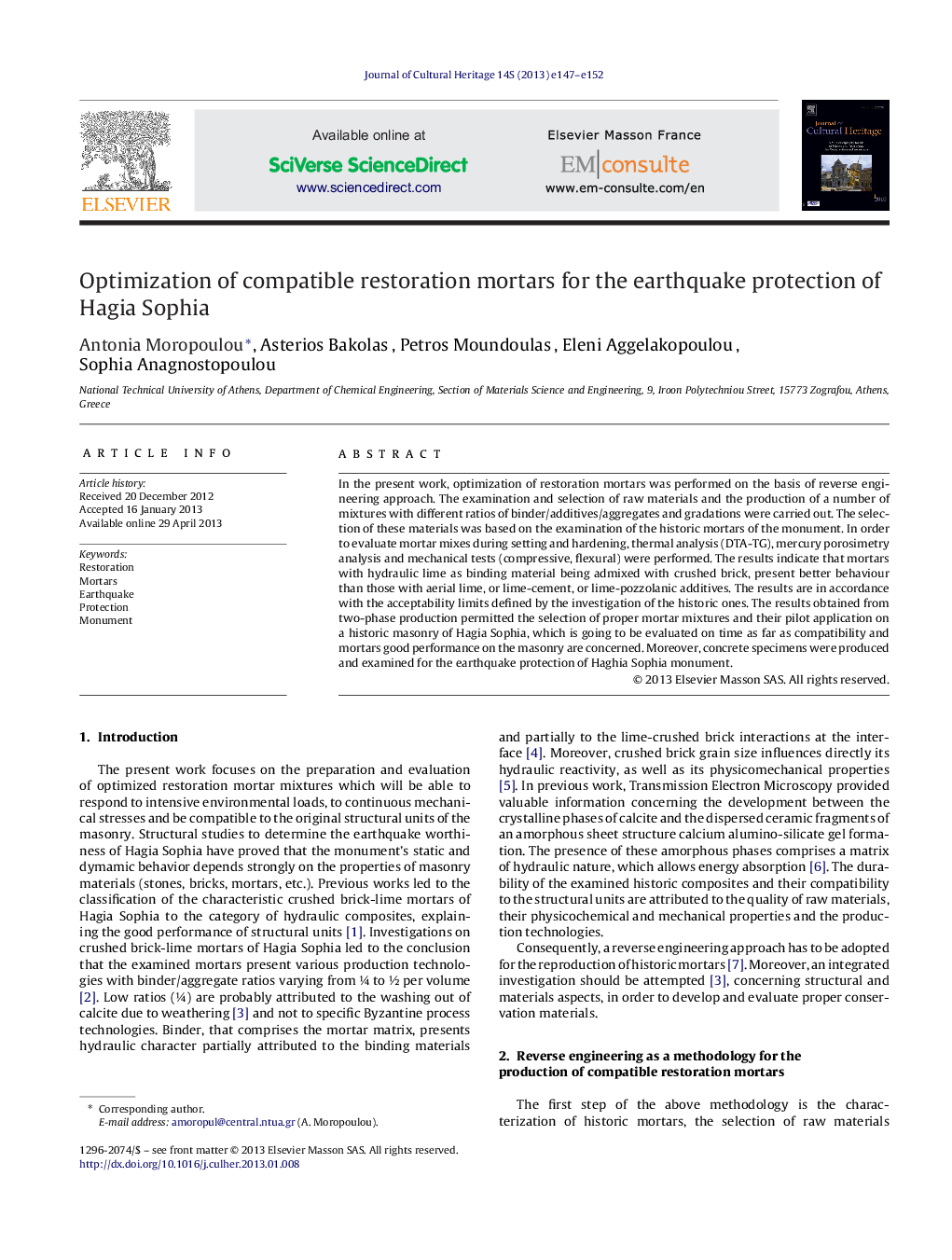| Article ID | Journal | Published Year | Pages | File Type |
|---|---|---|---|---|
| 1038116 | Journal of Cultural Heritage | 2013 | 6 Pages |
In the present work, optimization of restoration mortars was performed on the basis of reverse engineering approach. The examination and selection of raw materials and the production of a number of mixtures with different ratios of binder/additives/aggregates and gradations were carried out. The selection of these materials was based on the examination of the historic mortars of the monument. In order to evaluate mortar mixes during setting and hardening, thermal analysis (DTA-TG), mercury porosimetry analysis and mechanical tests (compressive, flexural) were performed. The results indicate that mortars with hydraulic lime as binding material being admixed with crushed brick, present better behaviour than those with aerial lime, or lime-cement, or lime-pozzolanic additives. The results are in accordance with the acceptability limits defined by the investigation of the historic ones. The results obtained from two-phase production permitted the selection of proper mortar mixtures and their pilot application on a historic masonry of Hagia Sophia, which is going to be evaluated on time as far as compatibility and mortars good performance on the masonry are concerned. Moreover, concrete specimens were produced and examined for the earthquake protection of Haghia Sophia monument.
